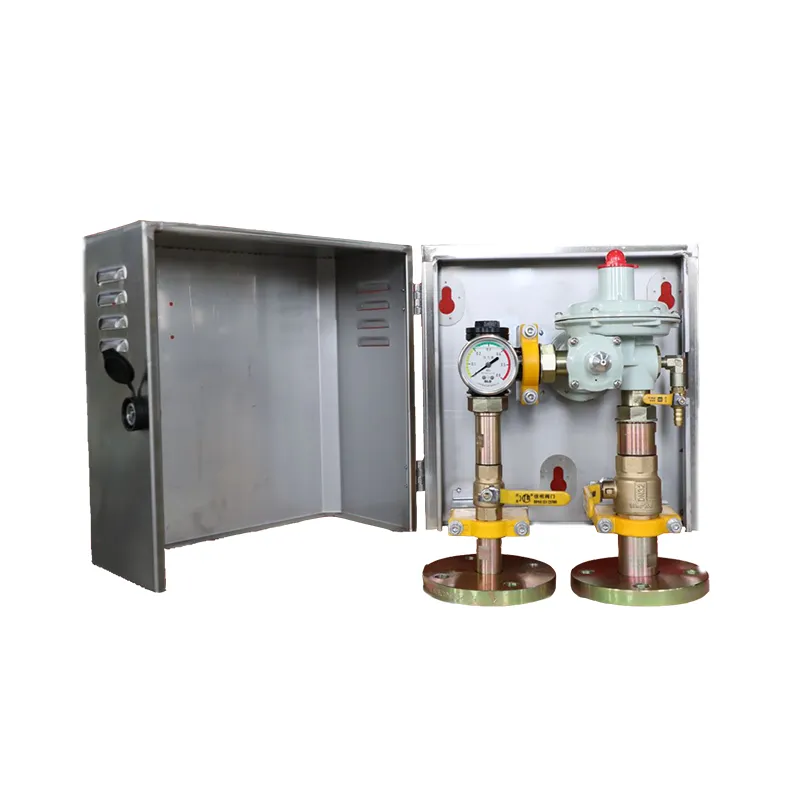
Oct . 07, 2024 22:17
Back to list
pneumatic control valve
Understanding Pneumatic Control Valves A Comprehensive Overview
Pneumatic control valves play a crucial role in various industrial applications, serving as essential components in systems that rely on compressed air to operate machinery and control processes. These valves regulate the flow and pressure of air within pneumatic systems, ensuring optimal performance and efficiency. In this article, we will explore the functionality, types, applications, and benefits of pneumatic control valves.
Functionality of Pneumatic Control Valves
At their core, pneumatic control valves are devices that manage the flow of compressed air within a circuit. They operate by opening or closing a passageway for air, allowing it to flow freely or restricting it as needed. The opening and closing actions can be manual, automated, or remotely controlled, depending on the application. These valves are often equipped with actuators that respond to control signals, enabling precise regulation of air flow and pressure.
The primary functions of pneumatic control valves include starting and stopping air flow, controlling the rate of air flow, and maintaining the pressure within a system. These functions are vital for ensuring that pneumatic systems operate safely and efficiently, contributing to improved productivity in various industries.
Types of Pneumatic Control Valves
There are several types of pneumatic control valves, each designed for specific applications and operational requirements. The most common types include
1. Directional Control Valves These valves control the direction of airflow in a pneumatic system. They can be activated by manual levers, push buttons, or electrical signals, allowing for the precise routing of air to different components.
pneumatic control valve

2. Flow Control Valves These valves regulate the speed of actuators by controlling the rate at which compressed air flows into a cylinder. By adjusting the flow rate, operators can manage the speed of machinery and improve overall process control.
3. Pressure Control Valves These valves maintain a specific pressure level within a pneumatic system. They can relieve excess pressure to prevent system failures and protect sensitive components from damage.
4. Shut-off Valves As the name suggests, these valves are used to completely stop the flow of air in a system. They are essential for isolating sections of equipment during maintenance or repair.
Applications of Pneumatic Control Valves
Pneumatic control valves are utilized in a vast array of industries, including manufacturing, automotive, aerospace, and food processing. In manufacturing, they are essential for operating machinery such as pneumatic cylinders, conveyors, and robotics. In the automotive industry, they control tools and equipment used in assembly lines. Additionally, in the aerospace sector, these valves are used in flight control systems for improved safety and performance.
Benefits of Pneumatic Control Valves
The use of pneumatic control valves offers numerous advantages. They are generally lightweight, compact, and easy to install, making them ideal for applications where space is limited. Moreover, pneumatic systems are often easier to maintain than their hydraulic counterparts, leading to increased reliability and lower operational costs. Additionally, the rapid response times of pneumatic control valves contribute to enhanced process control, improving overall efficiency.
In conclusion, pneumatic control valves are indispensable components in modern industrial applications. Their ability to regulate air flow and pressure ensures that pneumatic systems function efficiently and safely, ultimately driving productivity and innovation across various sectors. Understanding the functionality, types, and benefits of these valves is vital for anyone involved in the design, operation, or maintenance of pneumatic systems.
Next:
Latest news
-
Safety Valve Spring-Loaded Design Overpressure ProtectionNewsJul.25,2025
-
Precision Voltage Regulator AC5 Accuracy Grade PerformanceNewsJul.25,2025
-
Natural Gas Pressure Regulating Skid Industrial Pipeline ApplicationsNewsJul.25,2025
-
Natural Gas Filter Stainless Steel Mesh Element DesignNewsJul.25,2025
-
Gas Pressure Regulator Valve Direct-Acting Spring-Loaded DesignNewsJul.25,2025
-
Decompression Equipment Multi-Stage Heat Exchange System DesignNewsJul.25,2025

